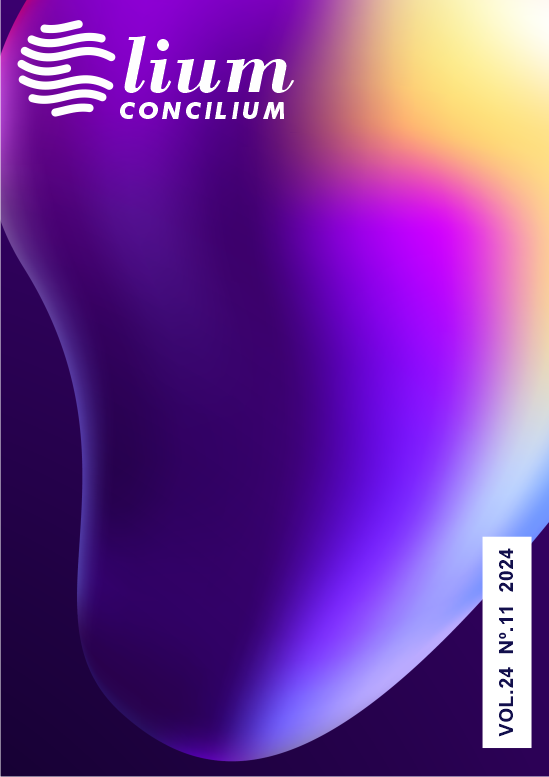Geographical indication: a review
Indicação geográfica: uma revisão
Resumo
Geographical Indication (GI) is an industrial property instrument that seeks to distinguish the geographic origin of a certain product or service. The challenge is associated with identifying how the Geographical Indication seal could be a useful tool to leverage local and regional development. The objective of this study is to review the international literature on the topic of Geographical Indication, especially for wine production. The SCOPUS database was used as a search engine. The expression “geographical indication” was used as a search key in the title, keywords or summary fields, resulting in 2224 publications. Publications were analyzed without filter. It was noticed that “Protection” has a negative inclination, that is, it is being left aside as a research interest. The words associated with Wine, Food and Sustainability showed a positive slope in the linear regression, which suggests that they are causing increasing interest among researchers.
Downloads
Referências
Angerami, E. L. S., & Almeida, M. C. P. D. (1982). Divulgação do conhecimento científico produzido na enfermagem. Revista da Escola de Enfermagem da USP, 16, 211-223.
Belletti, G., Marescotti, A., & Touzard, J. M. (2017). Geographical indications, public goods, and sustainable development: The roles of actors’ strategies and public policies. World Development, 98, 45-57.
Bowen, S., & Zapata, A. V. (2009). Geographical indications, terroir, and socioeconomic and ecological sustainability: The case of tequila. Journal of rural studies, 25(1), 108-119.
BRASIL, C. (1996). Lei nº 9.279 de 14 de Maio de 1996. Regula direitos e obrigações relativos à propriedade industrial. Disponível em:< http://www. planalto. gov. br/ccivil_03/leis L, 9279.
Conceição, V. A. D. S., & Chagas, A. M. (2020). O pesquisador e a divulgação científica em contexto de cibercultura e inteligência artificial. Acta Scientiarum. Education, 42.
Deselnicu, O. C., Costanigro, M., Souza-Monteiro, D. M., & McFadden, D. T. (2013). A meta-analysis of geographical indication food valuation studies: what drives the premium for origin-based labels?. Journal of Agricultural and Resource Economics, 204-219.
García, E. S., Vera, J. V. A., Tovar, E. S. D., & Rivera, R. C. (2024). Alcances y limitaciones de la denominación de origen del mezcal en México. Agricultura, Sociedad y Desarrollo, 21(1), 51-63.
INPI (2023). Manual de Indicações Geográficas. Disponível em <https://manualdeig.inpi.gov.br/projects/manual-de-indicacoes-geograficas/wiki/02_Indica%C3%A7%C3%A3o_Geogr%C3%A1fica_e_esp%C3%A9cies_de_registro#21-Indica%C3%A7%C3%A3o-Geogr%C3%A1fica>, Acesso em 26/04/2024
Li, Y., Wang, K., Xiao, Y., & Froyd, J. E. (2020). Research and trends in STEM education: A systematic review of journal publications. International journal of STEM education, 7, 1-16.
Malacarne, A., Nunes-Silva, L., & De-Bortoli, R. (2019a). Geographical indication as a tool for regional development: an opportunity for small farmers to excel in the market. International Journal of Social Science and Humanity, 9(2), 22-5.
Malacarne, A., Nunes-Silva, L., & De-Bortoli, R. (2019b). Analysis of geographical indication publications. Razón y Palabra, 23(104), 479-492.
Malacarne, A., Silva, L. N. D., Vieira, C. S., Macedo, R. F., Malacarne, A., Monte, W. S.
D., & De-Bortoli, R. (2019). Geographical Indication and Regional Development: Cause or Consequence. Journal of Agricultural Science, 11(3), 535.
Malacarne, A., Silva, L. N., Macedo, R. F., & De-Bortoli, R. (2017). Geographic Indication can Add Value to Jacu Coffee'producers. Revista INGI-Indicação Geográfica e Inovação, 1(1), 001-017.
Misaf (Ministero dell’ Agricoltura, della Sovranità Alimentare e delle Foreste) (2024). Elenchi Vini DOP e IGP italiani. Disponível em <https://www.politicheagricole.it/flex/cm/pages/ServeBLOB.php/L/IT/IDPagina/4625>, acesso em 02/05/2024
Molina, M. S. (2020). Indicações geográficas de vinhos na legislação argentina. Revista de la Facultad de Derecho, (49).
OASPA (2021). Analysis shows further growth in OASPA member journals output: CC BY dominates whilst content consolidation grows. Disponível em: https://www.oaspa.org/news/analysis-shows-further-growth-in-oaspa-member-journals-output-cc-by-dominates-whilst-content-consolidation-grows/, Acesso em 30/04/2024.
Silva, R. F. D., & Razzolini Filho, E. (2021). Publicações científicas em marketing verde uma perspectiva bibliométrica. RDBCI: Revista Digital de Biblioteconomia e Ciência da Informação, 19, e021018.
Skuras, D., & Vakrou, A. (2002). Consumers’ willingness to pay for origin labelled wine: a Greek case study. British Food Journal, 104(11), 898-912.



